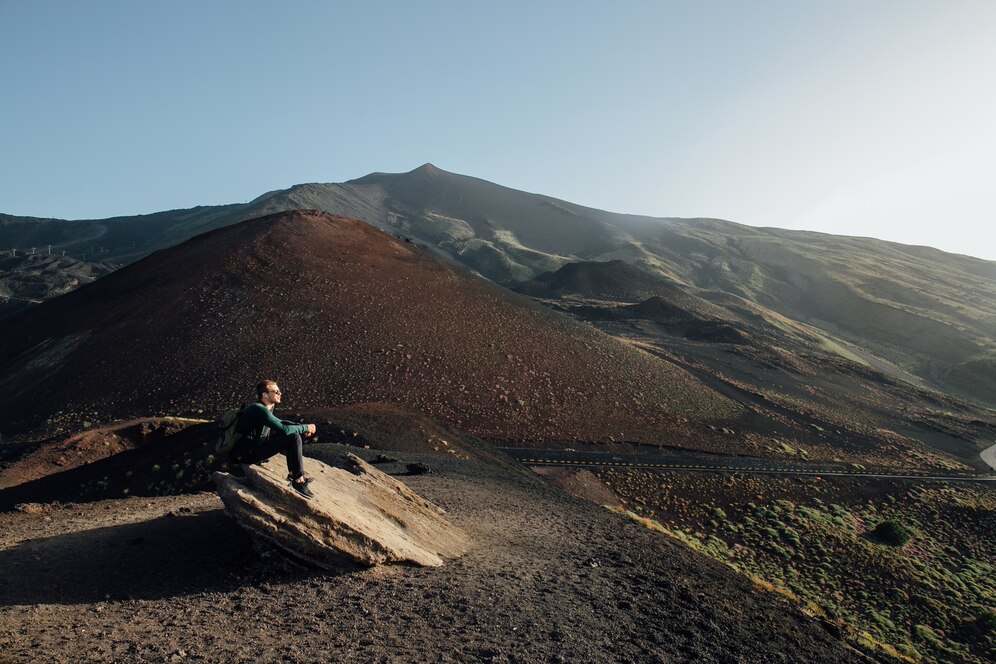Have you ever felt the thrill of reaching the top of a hill, only to wonder how you’ll manage to go back down?
Hiking downhill can be challenging and, at times, harder than the climb up.
But don’t let the downward path intimidate you.
With the right techniques and a bit of know-how, you can make your descent safe, enjoyable, and kind to your body.
Luckily for you, we have brought simple and effective tips that will help you navigate downhill trails like a pro:
How To Hike Downhill? Downhill Hiking Tips & Tricks
Listed below are the best tips and tricks when it comes to hiking downhill:
1. Choose The Right Footwear
Selecting appropriate footwear is crucial when hiking downhill.
Your shoes or boots should provide ample traction to prevent slipping on loose or uneven terrain. They should also offer good ankle support to protect against twists or sprains, especially under the added strain of a downhill trek.
A well-fitted pair will cushion your feet and reduce the impact with each step, making your hike more comfortable and reducing the risk of blisters.
Related: What to wear when hiking?
2. Use Trekking Poles
Trekking poles are invaluable tools for downhill hiking. They help in maintaining balance and stability, especially on steep or slippery slopes.
Distributing some of your body weight to the poles reduces the impact and stress on your knees and leg joints.
Additionally, they can be used to probe the ground in front of you for stability, ensuring that each step you take is onto solid ground.
3. Take Smaller Steps
Taking smaller, more controlled steps can greatly improve stability and balance when hiking downhill.
It allows for a more manageable center of gravity and reduces the risk of slipping or falling.
Smaller steps also mean that your muscles and joints absorb less impact with each step, which can help prevent fatigue and injury over longer distances.
4. Lean Slightly Backward
While it may seem counterintuitive, leaning slightly backward when descending can help in maintaining balance and control.
This position helps counteract the downhill slope and prevents you from leaning too far forward, which can increase the risk of tumbling or putting undue strain on your leg muscles and joints.
5. Keep Your Knees Bent
Keeping your knees slightly bent is one of the best tips for hiking downhill, and it has a couple of benefits.
First, it provides a natural shock absorption system, reducing the impact on your knees and leg joints.
Second, it allows for greater stability and balance, as bent knees can adapt more easily to changes in terrain or unexpected obstacles.
6. Don’t Cut Switchbacks
Switchbacks are the zigzag paths on steep sections of a trail designed to make the ascent or descent more manageable.
Cutting switchbacks (taking a shortcut straight down the slope) can be tempting, but it’s harmful to the trail and the surrounding environment. It can lead to erosion, damage vegetation, and ruin the trail for future hikers.
Staying on the path respects the natural landscape and ensures the trail remains intact and safe for everyone.
7. Distribute Weight Evenly in Your Backpack
A well-balanced backpack can significantly improve your comfort and stability while hiking downhill.
Ensure that the weight in your backpack is evenly distributed to avoid being pulled backwards or sideways, which can lead to strain or imbalance.
A centered load helps you maintain a natural posture and makes managing the downhill terrain easier and safer.
Conclusion
Hiking downhill doesn’t have to be a knee-trembling ordeal.
Adopting these practical downhill hiking tips allows you to transform your descent into an enjoyable and safe part of your hiking adventure.
And one last thing: always keep in mind that the right footwear sets the foundation, trekking poles are your allies, and your steps are the rhythm of your downhill dance.
By the way, have you ever thought of going for solo hiking?




